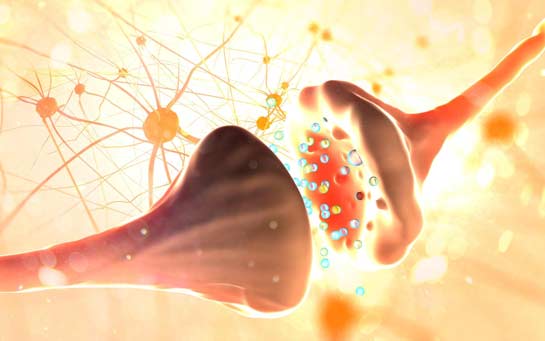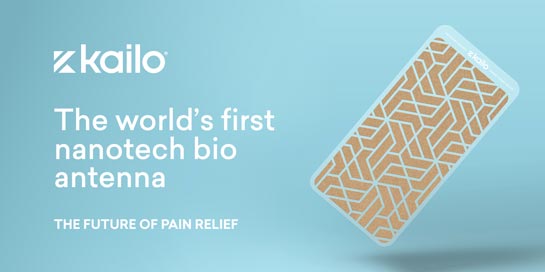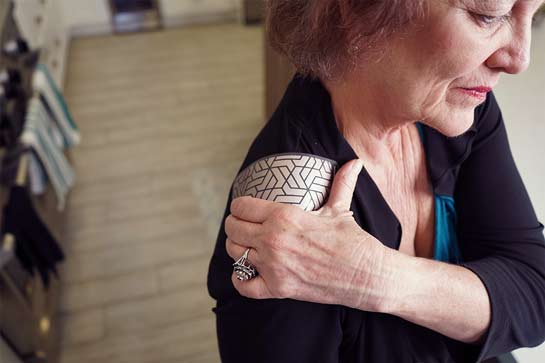Advertorial
How a New Piece of Technology Provides the Drug-Free Pain Relief You’ve Been Looking For
Sponsored by Kailo

If you’re one of the 40 million Americans suffering from chronic pain (or one of the countless others worldwide),¹ you’re likely familiar with the conventional options for pain relief…
Prescription pain medication.
But these medications can be highly addictive and come with frightening side effects:
- Dizziness
- Nausea
- Vomiting
- Constipation²
They also make you sleepy when you don’t want to be² which can make it just as hard to live your day-to-day life as the pain itself.
Don’t think you’re out of the woods if you’re reaching for an over-the-counter pain med.
Regardless of which brand you choose, over-the-counter pain medicine typically falls under the category of non-steroidal anti-inflammatory drugs, or NSAIDs.
While NSAIDs have the advantage of being non-habit forming, they come with their own risk of debilitating side effects, and that risk INCREASES when you use NSAIDs daily to manage chronic pain.³
Some of the side effects of NSAIDs include:
- Gastrointestinal bleeding and ulcers
- Hypertension and other heart-related conditions
- Kidney failure.³⁻⁵
With options like these, chronic pain sufferers have faced a choice: live with debilitating pain or debilitating pain medication.
Until now …
A Breakthrough That Could Give You Your Life Back

Recent scientific breakthroughs have led to the development of a drug-free pain solution that’s already helped thousands of people.
It’s called Kailo, and it works with your own biological processes to bring instant pain relief.
Kailo is a microtechnology patch that acts as a bio-antenna, amplifying your body’s communication system and telling your brain to turn off the pain.
How Your Body Communicates Pain

Your brain is constantly communicating with the rest of your body through your nervous system, which sends both chemical and electrical signals.⁶
These signals can give your brain a lot of information from “I’m hungry” to “Don’t touch that! It’s hot” to “Ouch! It hurts.”
In many ways, these signals keep you safe and allow you to react to your environment.
But like all of your body’s processes, this system can break down.
Much like forgetting to turn off the lights in your house, the electrical signals in your nervous system can end up always on — leading to chronic pain.
In one study, researchers found that patients suffering from chronic lower back pain had higher electrical activity in their skin and more frequent nonspecific electrical fluctuations.⁷
Another medical analysis found that injured tissue has a higher electrical resistance than the surrounding tissue.¹
This makes it harder for your body to send electrical signals between your nervous system and your brain.¹ Essentially, there’s more electrical activity and less communication, all of which slow the healing process and cause inflammation.
So, if poor communication and the electrical signals in your nervous system are responsible for your pain, then the best way to eliminate pain is to amplify communication and change the signals.
Signaling Your Brain to Lower the Pain
The Kailo pain patch relies on the same technology as microcurrent electrical therapy or MET.

MET supplies the body with low doses of electrical currents⁸ — so low that a patient undergoing MET treatment can’t feel the currents at all.
The nervous system can use these microcurrents in place of its own electrical signals,⁸ giving your body and brain a break.
Multiple studies have shown that MET can lower inflammation, promote muscle relation, and improve range of motion. ¹﹐⁹⁻¹⁰ In one study, researchers also found that electrical stimulation led to chemical changes in the brain.¹¹
It prompted the brain to release endorphins — hormones that decrease pain and increase pleasure.¹¹
Kailo uses a patented version of microcurrent technology developed for use in antennas, signal transmission, bio identification, and energy storage.
This technology boosts your body’s electrical signals and helps your brain communicate more effectively with injured tissue.
It overrides the electrical signals from your nervous system and replaces them with a signal that tells your brain to decrease the pain. With Kailo, you can get pain relief in under 60 seconds.
How to Use Kailo for Pain Relief
Even though Kailo communicates with your body through a microcurrent, it never needs to be plugged in or charged.
The microtechnology built into the patch supplies all the power it needs.
Kailo provides hyperlocal relief — it will address the pain in the spot where it’s applied.
You can apply it over a thin layer of clothing or directly to your skin anywhere on your body, including the head, neck, shoulders, back, hands, and feet.

Microcurrent technology has proven effective at easing the pain caused by everything from sprains to earaches to carpal tunnel syndrome to chronic conditions like fibromyalgia.¹﹐¹²
Because Kailo is drug-free, you can wear it as often as you’d like.
The patch is durable and waterproof. Wear it in the shower, to the gym, in the pool, or around town.
If the patch gets dirty, you can clean it with warm soapy water and leave it to air dry. The patch will last for years, providing you with comfort and relief.
Experience the Future of Pain Relief
Pain is damaging enough. Don’t let your pain treatment compound your problems. Try Kailo. It’s a modern solution to pain that’s completely drug-free.
Right now, Kailo is available at a special price. Plus, your purchase comes with a 90-day, 100% money-back guarantee. So, you have nothing to lose — except your pain.
This website is an advertising market place for companies who provide consumers products and services. This website is an advertisement and not a news publication. All persons depicted on this site are models. The owner does not recommend or endorse any specific company. Terms, conditions and exclusions may apply. Representations regarding the efficacy and safety of Kailo have not been evaluated by the Food and Drug Administration. The FDA only evaluates foods and drugs, not supplements like these products. These products are not intended to diagnose, prevent, treat, or cure any disease. This information does not constitute medical advice and it should not be relied upon as such. Consult with your doctor before modifying your regular medical regime.
References: All Sources 1 2 3 4 5 6 7 8 9 10 11 12 | United States Patent | Journal Articles